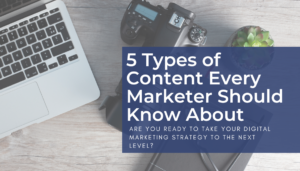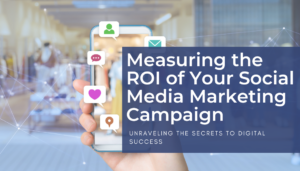Pay-per-click (PPC) advertising has become a crucial component of digital marketing strategies for businesses of all sizes. With PPC, businesses can bid on keywords or target specific demographics, and only pay when their ads are clicked. This makes PPC an efficient and cost-effective way to drive targeted traffic to websites, generate leads, and increase sales.
However, with numerous PPC advertising platforms available, it can be overwhelming for businesses to decide which one is right for their needs. Each platform has its unique features, benefits, and target audience. This makes it essential to understand the options before investing time and resources into a PPC campaign.
In this article, we will explore the top PPC advertising platforms and provide insights to help businesses make informed decisions. We will discuss the pros and cons of each platform, highlight their key features and benefits, and provide tips for optimizing campaigns. Whether you’re a small business owner, a marketer, or a digital advertiser, understanding the top PPC platforms can help you make the right choice to your advertising goals.
Google Ads:
Google Ads, formerly known as Google AdWords, is the most popular and widely used PPC advertising platform. With billions of searches happening on Google every day, it offers businesses unparalleled reach and exposure to potential customers. Google Ads allows businesses to create text ads, display ads, shopping ads, video ads, and more. You can also target ads based on keywords, demographics, location, and other criteria.
Key features and benefits of Google Ads:
- Extensive reach: Google Ads allows businesses to target a massive audience as Google dominates the search engine market with over 90% of the global search share. This means businesses can potentially reach millions of potential customers who are actively searching for products or services related to their offerings.
- Flexible ad formats: Google Ads offers a wide range of ad formats, including text ads, display ads, shopping ads, video ads, and app promotion ads. This allows businesses to choose the format that best suits their advertising goals and target audience.
- Advanced targeting options: Google Ads provides robust targeting options, including keywords, demographics, location, interests, and more. This allows businesses to refine their targeting and show their ads only to the most relevant audience. This increases the chances of getting high-quality clicks and conversions.
- Powerful analytics: Google Ads provides comprehensive analytics tools that allow businesses to track the performance of their ads, measure the ROI, and optimize their campaigns. This data-driven approach enables businesses to make informed decisions and continuously improve their PPC campaigns.
Target audience and business types that can benefit from Google Ads:
Google Ads is suitable for a wide range of businesses, including e-commerce, local businesses, B2B, and B2C. It can benefit businesses that want to increase their online visibility, drive traffic to their websites, generate leads, and increase sales. Businesses that have a budget for advertising and are looking for a scalable and customizable advertising solution can find value in Google Ads.
Tips for optimizing Google Ads campaigns:
- Conduct thorough keyword research: Keyword research is the foundation of a successful Google Ads campaign. Businesses should conduct thorough research to identify the most relevant and high-performing keywords for their industry, products, or services. Using relevant keywords in ad copy, landing pages, and targeting can improve the ad’s performance and increase the chances of quality clicks.
- Create compelling ad copy: The ad copy should be engaging, relevant, and include a clear call-to-action (CTA). It should highlight the unique selling propositions (USPs) of the business and entice users to click on the ad.
- Test multiple ad variations: Testing different ad variations can help identify which ads are performing better and optimize accordingly. Businesses can experiment with different headlines, ad copy, and CTA’s to find the winning combination that resonates with their audience.
- Optimize landing pages: The landing page is where users land after clicking on the ad. It should be relevant, user-friendly, and optimized for conversions. A poorly designed or irrelevant landing page can result in a high bounce rate and low conversion rate. This negatively impacts the campaign’s performance.
- Monitor and optimize regularly: Google Ads requires ongoing monitoring and optimization to ensure optimal performance. Businesses should regularly review the campaign’s performance, identify areas that need improvement, and make data-driven optimizations to achieve better results.
To sum up, Google Ads is a powerful and widely used PPC advertising platform that offers extensive reach, flexible ad formats, advanced targeting options, and robust analytics. It can benefit businesses of various types and sizes, helping them achieve their advertising goals. By conducting thorough research, creating compelling ad copy, testing different ad variations, optimizing landing pages, and regularly monitoring and optimizing the campaign, businesses can leverage the full potential of Google Ads
Bing Ads:
Bing Ads is the PPC advertising platform by Microsoft that allows businesses to create and manage ads on Bing, Yahoo, and AOL. While Bing may have a smaller search market share compared to Google, it still reaches a substantial audience. This makes Bing Ads a viable option for businesses looking to diversify their PPC advertising efforts.
Key features and benefits of Bing Ads:
- Unique audience: Bing Ads can help businesses reach a unique audience that may not be fully captured by Google Ads. Bing has a different demographic profile with a higher percentage of older, wealthier users who may have different search behaviors. This makes Bing Ads particularly effective for businesses targeting niche markets or specific demographics.
- Lower competition: Bing Ads often have lower competition compared to Google Ads. This can result in lower cost-per-click (CPC) and potentially higher return on investment (ROI). With fewer advertisers bidding on keywords, businesses may find it easier to achieve higher ad placements and visibility on Bing search results.
- Import from Google Ads: Bing Ads allows businesses to easily import their campaigns from Google Ads. This makes it convenient for businesses running campaigns on Google to expand their reach to Bing without starting from scratch. This can save time and effort in campaign setup and management.
- Ad scheduling options: Bing Ads provides advanced ad scheduling options that allow businesses to specify when their ads should run based on the time of day, day of the week, or specific dates. This can help optimize campaign performance by showing ads during peak times or when the target audience is likely to be searching.
- Partner network: Bing Ads also include advertising on Yahoo and AOL search engines, as Bing powers the search results for these platforms. This expands the reach of Bing Ads beyond just Bing. This allows business to potentially reaching additional audiences and increase the overall reach of the PPC campaign.
Target audience and business types that can benefit from Bing Ads:
Bing Ads can be beneficial for businesses targeting specific demographics, niche markets, or industries that have a higher percentage of older or wealthier users. It can also be a cost-effective option for businesses looking to diversify their PPC advertising efforts and reach audiences beyond Google. Bing Ads can be particularly relevant for businesses in industries such as finance, healthcare, and home improvement, as these are commonly searched topics on Bing.
Tips for optimizing Bing Ads campaigns:
- Conduct keyword research: Just like with Google Ads, conducting thorough keyword research is essential for Bing Ads. Businesses should identify relevant keywords with sufficient search volume on Bing and optimize their ad copy, landing pages, and targeting accordingly.
- Create unique ad copy: While Bing Ads allows for importing campaigns from Google Ads, it’s important to create unique ad copy tailored to the Bing audience. Understanding the demographic profile and preferences of Bing users can help create ad copy that resonates with them. This can improve click-through rates (CTR) and conversions.
- Take advantage of ad scheduling: Bing Ads provides advanced ad scheduling options. This allows businesses to specify when their ads should run. Analyzing the performance data and identifying peak times or days when the target audience is most active can help optimize ad scheduling for better performance.
- Monitor and optimize regularly: As with any PPC campaign, regular monitoring and optimization are crucial for Bing Ads. Businesses should review the performance data, identify areas that need improvement, and make data-driven optimizations to achieve optimal results.
In summary, Bing Ads offers unique features and benefits. This includes a unique audience, lower competition, easy import from Google Ads, ad scheduling options, and a partner network with Yahoo and AOL. It can be a valuable addition to businesses’ PPC advertising efforts, particularly for those targeting specific demographics or looking to diversify their advertising channels.
Facebook Ads:
Facebook Ads is the advertising platform provided by Facebook that allows businesses to create and manage ads on the world’s largest social media platform. With over 2.9 billion monthly active users, Facebook Ads provides businesses with a vast audience to reach and engage with. Thus, making it a popular choice for digital marketers.
Key features and benefits of Facebook Ads:
- Large and diverse audience: Facebook has a massive user base with a wide demographic profile. This makes it possible for businesses to reach a diverse audience across various interests, demographics, and geographic locations. This allows for highly targeted and personalized advertising campaigns.
- Advanced targeting options: Facebook Ads provides advanced targeting options that enable businesses to create highly specific and customized target audiences. Businesses can target users based on demographics such as age, gender, location, interests, behaviors, and more. This precise targeting allows for more relevant ads and higher chances of reaching the right audience.
- Rich ad formats: Facebook Ads offers a variety of ad formats including image ads, video ads, carousel ads, and slideshow ads. These visually appealing and interactive ad formats can help businesses create engaging and compelling ads that resonate with users and drive higher engagement and conversions.
- Remarketing opportunities: Facebook Ads also provides remarketing options that allow businesses to target users who have previously interacted with their website or engaged with their content. This helps businesses to retarget and re-engage with users who have shown interest in their products or services, increasing the chances of conversion.
- Ad placements: Facebook Ads allows businesses to choose from a range of ad placements, including Facebook News Feed, Instagram, Audience Network (ad placements on third-party apps and websites), and Messenger. This provides businesses with multiple touchpoints to reach their target audience and increase brand visibility.
Target audience and business types that can benefit from Facebook Ads:
Facebook Ads can be beneficial for a wide range of businesses and industries, including e-commerce, B2C, B2B, and local businesses. It is particularly effective for businesses targeting younger audiences, as Facebook has a large user base of younger users. Facebook Ads can also be useful for businesses with visually appealing products, as the platform offers rich ad formats that allow for creative and engaging advertisements.
Tips for optimizing Facebook Ads campaigns:
- Define clear campaign objectives: Before creating Facebook Ads, it’s crucial to define clear campaign objectives. Whether it’s increasing brand awareness, driving website traffic, generating leads, or increasing sales. Having clear objectives will help in creating targeted ad campaigns and measuring success.
- Utilize advanced targeting options: Facebook Ads provides advanced targeting options that allow businesses to create highly specific target audiences. Take advantage of these options to reach the right audience based on demographics, interests, behaviors, and other relevant criteria. This will help in creating more relevant ads and improving campaign performance.
- Create compelling ad content: Facebook Ads are highly visual, so it’s important to create visually appealing and compelling ad content that grabs users’ attention. Use high-quality images or videos, clear and concise ad copy, and a strong call-to-action (CTA) to encourage users to take action.
- Test different ad formats and placements: Facebook Ads offers a variety of ad formats and placements. Test different formats and placements to see which ones perform best for your campaign objectives. It’s important to monitor the performance of different ad formats and placements and optimize accordingly to improve campaign results.
- Monitor and optimize regularly: As with any digital advertising campaign, regular monitoring and optimization are crucial for Facebook Ads. Analyze the performance data, identify areas that need improvement, and make data-driven optimizations to achieve optimal results.
Instagram Ads:
Instagram Ads is a PPC advertising platform provided by Instagram. It is a popular social media platform that focuses on visual content, such as photos and videos. With over 2.3 billion monthly active users, Instagram provides businesses with a highly engaged audience to reach and promote their products or services.
Key features and benefits of Instagram Ads:
- Visual storytelling: Instagram is known for its visual-centric nature. It allows businesses to tell their brand story through visually appealing photos and videos. Instagram Ads provide businesses with an opportunity to create visually stunning ads that capture the attention of users and promote their brand in a highly engaging way.
- Large and engaged audience: Instagram has a massive and highly engaged user base, particularly among younger demographics. This makes it an ideal platform for businesses targeting younger audiences or those in industries such as fashion, beauty, travel, food, and lifestyle.
- Seamless integration with organic content: Instagram Ads blend seamlessly with organic content on the platform, as they appear in users’ Instagram feeds or Instagram Stories. This allows businesses to promote their products or services in a native and non-intrusive way, enhancing the overall user experience.
- Advanced targeting options: Instagram Ads provide businesses with advanced targeting options, similar to Facebook Ads, as Instagram is owned by Facebook. Businesses can target users based on demographics, interests, behaviors, and more, allowing for highly targeted and personalized ad campaigns.
- Diverse ad formats: Instagram Ads offer a variety of ad formats. These include photo ads, video ads, carousel ads, slideshow ads, and Stories ads. This allows businesses to choose the ad format that best fits their creative content and campaign objectives, making it a versatile platform for advertising.
Target audience and business types that can benefit from Instagram Ads:
Instagram Ads can be beneficial for a wide range of businesses and industries, particularly those targeting younger audiences or those with visually appealing products or services. It is popular among industries such as fashion, beauty, travel, food, home decor, and lifestyle, as well as e-commerce businesses. Additionally, businesses that already have a strong presence on Instagram and are looking to amplify their reach and engagement can benefit from Instagram Ads.
Tips for optimizing Instagram Ads campaigns:
- Create visually appealing and high-quality content: Instagram is a visual platform. It’s important to create visually appealing and high-quality content that captures the attention of users. Use high-resolution images or videos, compelling ad copy, and a strong call to action to encourage users to take action.
- Utilize advanced targeting options: Instagram Ads provide advanced targeting options that allow businesses to create highly specific target audiences. Use these options to narrow down your audience based on demographics, interests, behaviors, and other criteria to ensure your ads are reaching the right users.
- Leverage Instagram Stories: Instagram Stories are a popular feature on the platform. Stories ads can be a highly effective way to engage with users. Create immersive and engaging Stories ads that utilize features such as polls, stickers, and swipe-up links to encourage users to interact with your content.
- Test different ad formats: Instagram Ads offer a variety of ad formats, so it’s important to test different formats to see which ones perform best for your campaign. Experiment with photo ads, video ads, carousel ads, and slideshow ads to determine which format resonates best with your target audience.
- Monitor and optimize regularly: Regularly monitor the performance of your Instagram Ads campaigns and make data-driven optimizations. Analyze the performance data, identify areas that need improvement, and adjust your targeting, ad creative, and ad placements accordingly to achieve optimal results.
In summary, Instagram Ads provide businesses a visually engaging platform to reach and engage with a large, highly engaged audience. By leveraging its visual appeal, seamless integration with organic content, advanced targeting options, and diverse ad formats, businesses can create effective and engaging ad campaigns on Instagram. Whether you’re targeting younger demographics, have visually appealing products or services, or want to amplify your brand’s reach on Instagram, Instagram Ads can be a valuable tool in your digital marketing strategy.
LinkedIn Ads:
LinkedIn Ads is a PPC advertising platform provided by LinkedIn, a professional networking platform that focuses on connecting professionals and businesses. With over 760 million members in more than 200 countries, LinkedIn provides businesses with a unique opportunity to target a highly professional and affluent audience for their advertising campaigns.
Key features and benefits of LinkedIn Ads:
- Professional targeting options: LinkedIn Ads provide businesses with advanced targeting options that allow them to reach a highly professional audience. These audiences are based on various criteria such as job title, industry, company size, seniority level, skills, and more. This makes it an ideal platform for B2B marketing and targeting decision-makers and influencers in specific industries or companies.
- Content-driven platform: LinkedIn is a content-driven platform. Users actively engage in professional discussions, share industry news, and consume relevant content. This makes LinkedIn Ads effective in delivering content-based campaigns such as thought leadership articles, whitepapers, webinars, and other educational resources.
- Brand building and thought leadership: LinkedIn Ads can be effective in building brand awareness in a professional context. By delivering relevant and valuable content to a professional audience, businesses can position themselves as industry experts in their niche. This can lead to increased trust, credibility, and business opportunities.
- Multiple ad formats: LinkedIn Ads offer a variety of ad formats. These formats include Sponsored Content, Sponsored InMail, Text Ads, and Dynamic Ads. This allows businesses to choose the ad format that best fits their campaign objectives and creative content. Therefore making it a versatile platform for advertising.
- Remarketing options: LinkedIn Ads also offer remarketing options. This enables businesses to target users who have previously engaged with their content or visited their website. This allows for highly targeted and personalized ad campaigns for users who have already shown interest in a business, increasing the likelihood of conversion.
Target audience and business types that can benefit from LinkedIn Ads:
LinkedIn Ads can be beneficial for businesses targeting a professional audience, particularly those in B2B industries. It is ideal for businesses looking to connect with decision-makers, and professionals in specific industries, company sizes, or seniority levels. It can be effective for industries such as technology, finance, professional services, human resources, marketing, and more. Additionally, businesses that are focused on content-driven marketing strategies, such as B2B lead generation, can benefit from LinkedIn Ads.
Tips for optimizing LinkedIn Ads campaigns:
- Refine your targeting: LinkedIn Ads provide extensive targeting options. Make sure to refine your targeting to reach your ideal audience. Use criteria such as job title, industry, company size, seniority level, and skills to narrow down your audience. Doing so will ensure your ads are reaching the most relevant users.
- Deliver valuable content: LinkedIn is a content-driven platform, so focus on delivering valuable and relevant content to your audience. Whether it’s through Sponsored Content, Sponsored InMail, or other ad formats, provide content that is informative, educational, and addresses the pain points or challenges of your target audience.
- Test different ad formats: LinkedIn Ads offer multiple ad formats. It is recommended to experiment to see which ones perform best for your campaign objectives. Test Sponsored Content, Sponsored InMail, Text Ads, and Dynamic Ads to determine which format resonates with your target audience and campaign goals.
- Utilize remarketing options: LinkedIn Ads offer remarketing options. Leverage this feature to target users who have previously engaged with your content or visited your website. This allows for personalized and targeted campaigns for users who have already shown interest in your business, increasing the chances of conversion.
- Monitor and optimize regularly: Regularly monitor the performance of your LinkedIn Ads campaigns and make data-driven optimizations. Analyze the performance of your ads, including click-through rates, conversion rates, and engagement metrics, and make adjustments accordingly. Test different ad copy, creative, targeting options, and bidding strategies to optimize your campaigns for maximum results.
In summary, LinkedIn Ads can be a powerful platform for businesses targeting a professional audience and looking to establish thought leadership, build brand awareness, and generate B2B leads. With its advanced targeting options, content-driven nature, and multiple ad formats, LinkedIn Ads can help businesses connect with decision-makers, influencers, and professionals in specific industries or company sizes. By delivering valuable content, testing different ad formats, utilizing remarketing options, and monitoring and optimizing campaigns regularly, businesses can make the most out of LinkedIn Ads and achieve their marketing objectives.
Comparison and Final Thoughts:
After reviewing the top PPC advertising platforms, it’s important to compare their key features, benefits, and target audience to determine which one is right for your business.
Google Ads, being the largest and most popular PPC platform, offers a wide reach, diverse ad formats, and robust targeting options. It’s suitable for businesses of all sizes and types, with a focus on search intent and keyword targeting.
Bing Ads, on the other hand, provide a smaller but significant audience, with a potential for lower competition and cost-per-click. It’s a good option for businesses looking to diversify their PPC efforts beyond Google and target a slightly different demographic.
Facebook Ads and Instagram Ads, as social media platforms, offer a vast user base and powerful audience targeting options based on demographics, interests, behaviors, and more. They are ideal for businesses focused on visual and engaging content. There is a strong emphasis on brand awareness, engagement, and lead generation.
LinkedIn Ads, with its professional networking focus, provides advanced targeting options to reach decision-makers, influencers, and professionals in specific industries or company sizes. It’s suitable for B2B marketing and content-driven campaigns, aiming to establish thought leadership and generate B2B leads.
In conclusion, the choice of the right PPC advertising platform for your business depends on your specific goals, target audience, and budget. Google Ads, Bing Ads, Facebook Ads, Instagram Ads, and LinkedIn Ads all offer unique features and benefits. However, they cater to different business needs. To further explore and implement an effective PPC strategy for your business, it’s recommended to consult with a professional digital marketing agency like DarkSky Digital. Contact us today to get expert guidance and assistance in optimizing your PPC campaigns for maximum results.
FOLLOW US ON SOCIAL MEDIA:
Read our latest posts on the blog:
- Understanding the Basics of Pay-Per-Click Advertising: A Beginner’s Guide

- 5 Types of Content Every Marketer Should Know About

- The Impact of Customer Reviews on Your Online Reputation

- Measuring the ROI of Your Social Media Marketing Campaign: Unraveling the Secrets to Digital Success

- Content Marketing vs. Traditional Advertising: Which is More Effective?

- Title: The Future of SEO: Unlocking the Secrets to Digital Success


